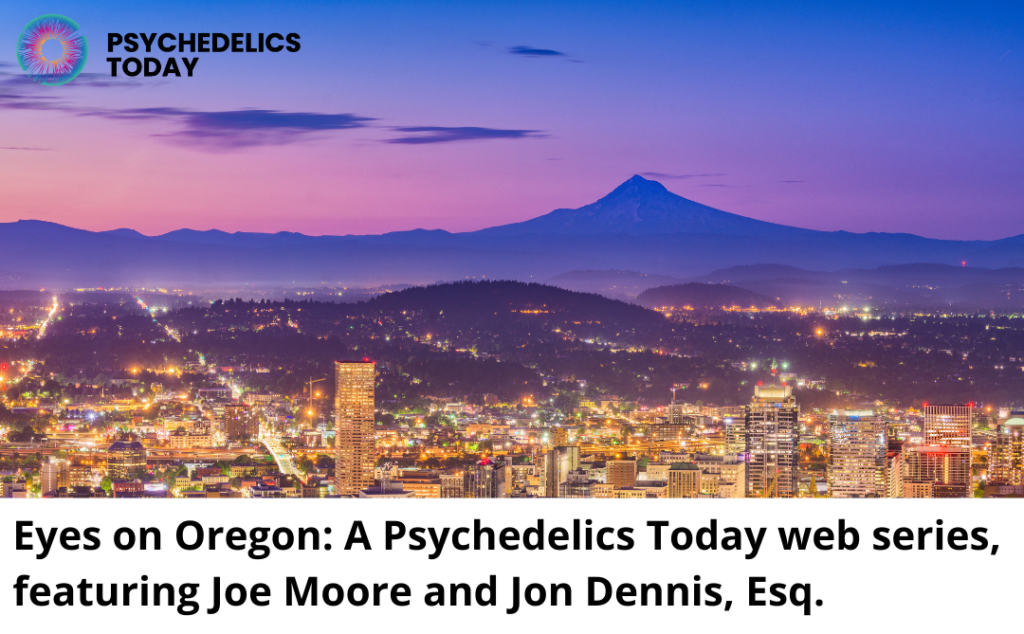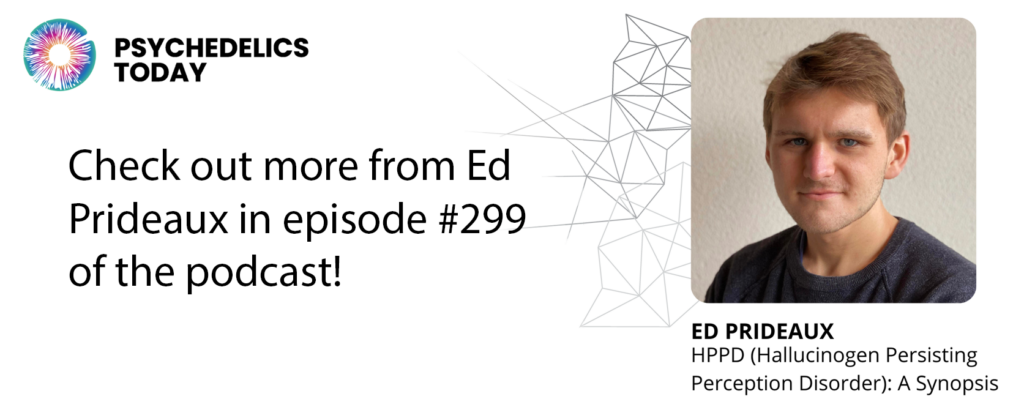Hallucinogen Persisting Perception Disorder, or HPPD, is among the more mysterious, debilitating, and under-researched possibilities of psychedelic drug-taking. As enthusiasm around psychedelics and their possible benefits continues to grow, it’s imperative that researchers, user populations, and clinicians look closely at HPPD and other possible hazards.
HPPD is little-known among clinicians, and many reporting these experiences have trouble finding informed help. Treatments – pharmacological, psychotherapeutic, and somatic – are out there, and by reports, have proven useful for some, but no controlled trials have been performed to gauge their true effectiveness.
In this article – intended as an exercise in harm reduction, raising awareness, and ensuring true informed consent before people ingest psychedelics – we’ll outline the current knowledge base around HPPD, including indications of the gaps and where future research may prove useful. This article’s tips, advice, and analysis (and more) is also featured in an in-depth HPPD Information Guide, which can be freely downloaded from the Perception Restoration Foundation’s website, where a more direct guide for those struggling with HPPD is also hosted.
The HPPD Basics: What is it?
Hallucinogen Persisting Perception Disorder is a DSM-5 listed condition in which people experience lasting, distressing changes to their perception after taking psychedelic drugs. There are two types: Type-1, in which people experience episodic (usually sudden) “flashbacks,” and Type-2 (the more commonly reported), in which people’s everyday perception is altered.
These perceptual changes may be married with shifts in cognition, mood, and somatic experience, and further research is required to understand how they relate. HPPD can last anywhere from weeks and months to several years – some people live with its perceptual changes for decades. In up to 50% of HPPD patients, the changes may spontaneously remit within five years.
The perceptual changes are wide-ranging, but most constellate around a stable set of experiences also reported in other conditions: Visual Snow Syndrome (VSS), migraine with aura, manic episodes, epilepsy, anxiety disorders, brain injuries, and also as experienceable features (under the right conditions) of normal, healthy perception.
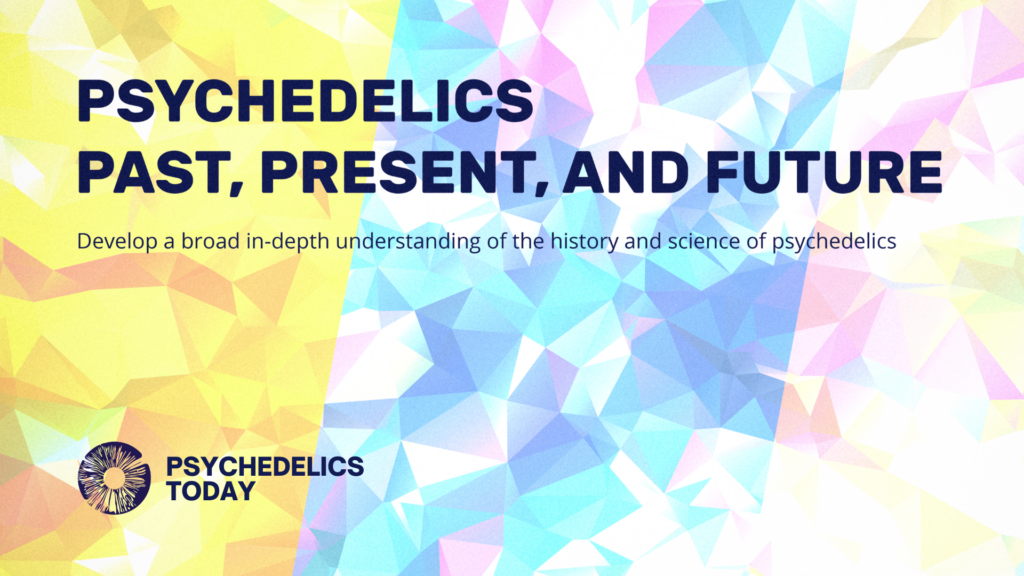
This implies that HPPD likely sits on a continuum with other disorders and ordinary perception. Further research is required to understand HPPD’s role in this continuum, the possibly unique contribution of psychedelics in affecting symptoms, and the kinds of treatments people with HPPD would benefit from versus other disorders.
- Visual snow: When the field of vision is coated with small, grainy dots like the static of a detuned TV
- Haloes and starbusts: When objects have a bright “halo” or “aura” ring around them, or concentric colored rays around light sources
- Trails: When an object moves, a trail of faint replicated images follows it
- After-images: When the outline or silhouette of an object is seen on a surface after looking away
- Enhanced hypnagogia, or the semi-visionary state experienced between waking and sleep
- Intensified floaters: Most of us have seen “floaters,” which are the small squiggly lines and shapes that sometimes appear in our vision. With HPPD, these floaters can become more visible, disturbing, and irritating
- Blue Field Entoptic Phenomenon: The appearance of tiny bright dots moving quickly along squiggly lines in the visual field, especially when looking into bright blue light such as the sky
- Changes to size and depth perception: Things can seem smaller, at-a-distance, expanded, or possessing a two-dimensional quality
- Assorted psychedelic-style effects: Fractal kaleidoscopic and geometric patterns, faces, “breathing” walls, moving, “wavy” or shaky text, flashing and strobing lights, closed-eye visuals, enhanced phosphenes
- Complex pseudohallucinations
Other, non-perceptual symptoms are reported, too:
- Physical effects, such as head pressure, acute neck pain, unequal pupil sizes, muscle twitches
- Tinnitus and ringing of the ears
- More intense dreams
- Auditory changes
- Confused and unclear thoughts, including brain fog, trouble processing information, memory loss, dyslexia, and the onset of stammering
- Depersonalization/Derealization Disorder (DP/DR), in which people feel detached from their bodies and the world stops feeling real
- Psychosis
- Anxiety, depression and panic
Note, to be diagnosed with HPPD, these changes must prompt distress – which they do, in many cases. They can disrupt people’s everyday function – relationships, work, operating heavy equipment, driving, navigating the day-to-day, and beyond – and cause anxiety, panic attacks, depression, and suicidal thoughts in high numbers of clinical patients. Many report a strong degree of isolation and loneliness, and the disorder is also strongly-correlated with dissociative experiences like Depersonalization/Derealization Disorder (DP/DR).
How Common is HPPD?
We don’t know. It seems that developing perceptual changes after taking psychedelics is not necessarily that uncommon; the distressing, intrusive kind that manifests in HPPD is likely a real but minority experience.
A 2011 survey of 2,455 users of psychedelics (via Erowid) found that up to three-fifths of psychedelic users reported lingering changes, 25% in ways that were seemingly permanent, and 4.2% in ways so distressing that they could prompt seeking clinical help. The latter is suggestive of diagnostic HPPD.
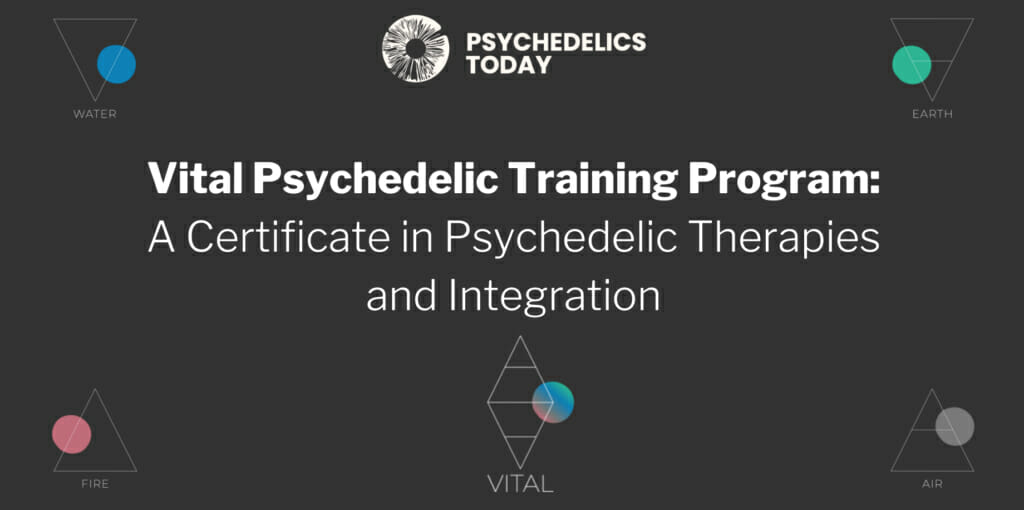
What Kinds of Psychedelics Are Implicated?
Practically every psychedelic, but some more than others: LSD, psilocybin, ayahuasca, 2-CB, ibogaine, etc., but also related (but not classically psychedelic) drugs like MDMA, cannabis, dextromethorphan (DXM), datura, ketamine, salvia, and diphenhydramine (DPH) have been implicated.
In anecdotal reports and the existing literature, it seems that LSD is the leading cause of perceptual changes compared to other kinds of drugs. Whether this is because LSD has been historically the most commonly-used psychedelic or there is something special to the LSD experience or its effect on neurophysiology is unclear. Short-acting psychedelics like DMT seem to be less implicated.
Some report that, after heavy use of classic psychedelics, their HPPD developed suddenly after the use of research chemicals like 25-i-nBOME, which is often mis-sold as LSD; HPPD is also reported in particular among users of synthetic cannabinoids. Cutting agents in street MDMA, including synthetic cathinones (“bath salts”), may make HPPD more likely.
Can Non-Psychedelic Drugs Create These Perceptual Changes?
Yes. SSRI antidepressants, antibiotics, antipsychotics, and nootropics have been described in self-reports as triggering very similar visual changes. There is also considerable overlap between HPPD/post-psychedelic perceptual changes and another drug-free condition known as Visual Snow Syndrome (VSS).
At the same time, compared to other drug classes, it seems that psychedelics (in particular, LSD) provide a higher risk factor for developing these perceptual changes. It may also be that HPPD patients report different kinds of visuals (perhaps more psychedelic ones), or more cognitive and emotional changes (as with psychedelics’ powerful psychoactive effects), compared to non-psychedelic groups.
Is HPPD the Same Thing as Flashbacks? Aren’t Flashbacks a Myth?
It’s complicated. The “flashback” describes a particular kind of experience in which people feel they truly re-live a prior psychedelic state: something that is real and can happen, and is what people may experience in Type-1 HPPD. Most cases of Type-2 HPPD, though, will likely not be true examples of flashbacks in this way.
To give a brief overview, the idea that psychedelic drugs could cause lasting changes in perception was noted from as early as 1954 – 15 years before the notion of the “flashback” was ever coined. A number of authors in the first wave of psychedelic research from the 1950s to the early 1960s reported patients experiencing a wide range of complications after their drug experiences – including what sounds like standard HPPD – but also states that blur more into psychosis and the experience of complex pseudohallucinations. They noted that some patients were acutely re-living their trips.
These observations continued once psychedelics became popular drugs of adult use in the mid-to-late 1960s. This was reported in popular media from, at latest, 1966.
The “flashback” label was coined by author Mardi J. Horowitz in 1969, and used for many years afterwards, including by Dr. Henry Abraham, who first developed the psychiatric diagnosis of HPPD. Perhaps contrary to what we’d expect, authors in the “flashback” literature were at pains to emphasize the complexity, variation, and need for further research in explaining the phenomenon, as well as noting that many (some surveys suggested the majority) did not find their experiences distressing.
The Flashback Problem
Unfortunately, the idea of the flashback was later sensationalized by journalists and prohibition activists, who tied the idea to certain marked untruths: that the drug can be “stored” in the spine or fat cells, make people legally insane, or otherwise cause major brain damage.
The flashback idea also had some conceptual problems, which is perhaps to be expected from the first attempts at describing a new phenomenon. With some critical exceptions, authors were bound by a consensus that post-psychedelic visuals and flashbacks were re-experiences of the visuals glimpsed in the psychedelic state – as if the drug had not properly worn off, perhaps as a matter of lasting changes to neurological function. The notion that HPPD is a “re-experiencing” has also become one of the core criteria of the current DSM-5 diagnosis.
As noted earlier, though, identical perceptual phenomena can be experienced both through non-psychedelic drug classes, and as part of experiences in which drugs played no necessary role: other kinds of neuropsychological conditions, or otherwise as a feature of normal perception.
In contemporary literature, some authors have noted that many patients experience visual effects that never manifested in their trips – though this isn’t the case for everyone. Those who are “reliving” their trips may be described plausibly as experiencing flashbacks.
The idea of the flashback is also not unique to psychedelics – in particular, it’s used as a descriptor for experiences of post-traumatic stress disorder (PTSD), in which people can feel “flung back” to the original trauma in quasi-visionary states. This implies that the psychedelic “flashback” may not be a distinct phenomenon for some (or most) cases: rather, that it’s an example of a psychedelic drug-induced traumatic flashback, where the real issue is trauma (not drugs per se).

How Do We Explain What’s Going On?
Since authors first noticed that psychedelics can cause lingering changes in perception, a variety of different hypotheses have been pursued to explain what’s going on. The HPPD experience will likely involve a complex, multi-factor origin that varies from patient to patient.
Could psychedelic experiences alter neurophysiological function?
HPPD’s leading neurophysiological hypothesis, introduced by Dr. Henry Abraham, relates the condition to a “disinhibition” of the visual cortex. Drugs like LSD decrease, or “disinhibit” the filters of the brain’s visual cortex, so visual noise that would otherwise be filtered out may remain in the field of vision. HPPD occurs when these filters do not return to their pre-drug state. This may make HPPD akin to a form of “visual tinnitus” (and tinnitus is also experienced as a symptom).
This disinhibition is linked to reductions in alpha waves in the brain. A neuroimaging study by Abraham (2001) suggested that alpha wave frequency increases with HPPD patients versus controls. The role of an objective alteration to visual perception was lent support by 1982 and 1988 studies executed by Abraham, in which he found both non-HPPD LSD users and HPPD patients had decreased ability to discriminate color differences and light sensitivity during dark adaptation, with HPPD patients reporting further decreased ability.
There could be a role for neuroplasticity, or neurons’ ability to change and reform in response to experience. This may be explained in the context of a “Bayesian Brain” model, similar to the REBUS and entropic brain hypotheses introduced by UCSF’s Robin Carhart-Harris: by shaking the “snowglobe” of our nervous system’s categories of perception through a psychedelic experience (or psychoactive changes altogether), it could be that those categories do not settle as before. A neuroplasticity model may explain why, in some cases, further psychedelic experimentation can reduce or eliminate HPPD presentation. It may underlie also why teenagers are especially vulnerable, as they have more plastic, developing brains.
LSD’s long duration may explain why the drug is so associated with HPPD – that is, with more hours of seeing abnormal visual changes, the brain is more likely to reprogram itself than with shorter-acting drugs. Smokeable DMT, for instance, isn’t particularly-associated with perceptual changes, while longer-acting ayahuasca is.
Synaptogenesis may also be involved. As described by Samuel Štancl, “Psychedelics induce strong synaptogenesis, or the creation of new synapses, resulting in high synaptic density. EEG scans show less inhibitory activity in the visual cortex both in people on psychedelics and in people with HPPD.” This means that electrical currents are being enhanced in the visual cortex by increased synaptic connection. This also underwrites why pruning excessive synapses through pharmacological treatments like lithium – or even exercise – may be useful.
What about psychological factors?
A 2018 paper by Halpern and Passie suggested that challenging drug experiences, including intense reactions of panic, dysphoria, anxiety and trauma, may be associated with a higher likelihood of developing HPPD. This is more likely for psychedelic use in uncontrolled settings.
Recall, HPPD often co-arises with Depersonalization/Derealization, a dissociative reaction in which people feel disconnected from their bodies and immediate environments. This is suggestive of anxiety and trauma. Drug-free anxiety and depersonalization are independently-associated with similar, if not identical, perceptual changes. Somatic cognitive changes, including head pressure and brain fog, are also associated with anxiety. Challenging and traumatic drug experiences may therefore induce elevations of anxiety, which has its own uncharted pathway towards many changes, including perception.
In the historical flashback literature, there was tentative evidence that visual phenomena could be experienced as matters of attention, hypnotization, and placebo suggestion. The role of trait absorption – or a person’s tendency to become occupied by mental imagery and internal experience, including daydreaming, fantasy and hypnagogia – has also been discussed by authors as a possible personality determinant of HPPD likelihood.
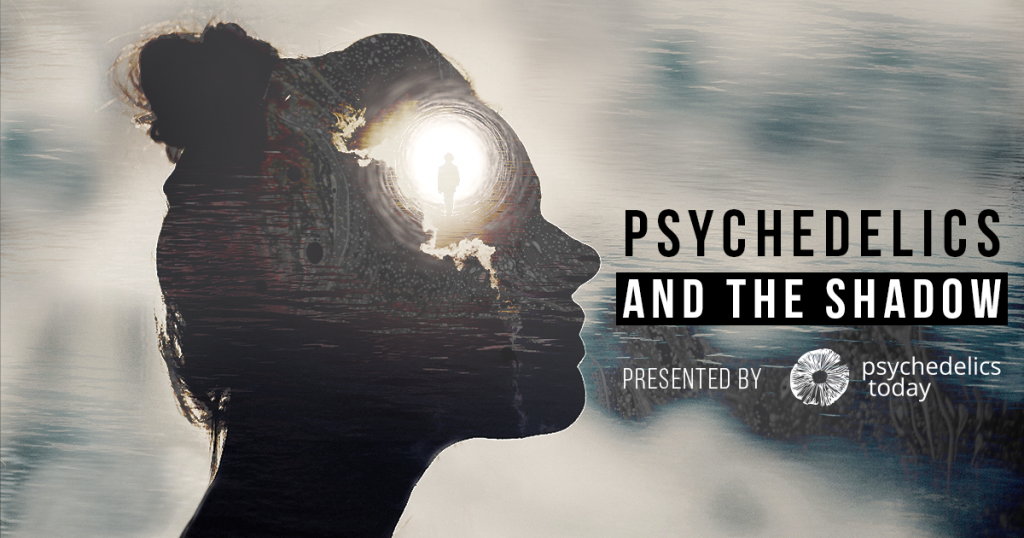
What’s more, there are case reports of people altogether resolving their distress and visuals through targeted psychotherapies without pharmaceuticals: in particular, Cognitive Behavioral Therapy (CBT) to target the destructive internal beliefs people formed around their condition (“I am brain damaged,” “I’m a weirdo,” “I’m a freak,” etc.), including in combination with relaxation techniques. The sense of isolation may also be addressed through the therapist leaning into their own capacity for abnormal visual phenomena, and experiencing them with the patient – something that resolved one person’s HPPD.
Psychedelic researcher Stanislav Grof explained and resolved his patients’ cases of HPPD through psychodynamic therapies. He interpreted HPPD as a problem of the psychedelic surfacing unconscious material that needed to be re-integrated through additional encounter experiences, including with psychedelics and breathwork.
Could HPPD patients simply be noticing more stuff that previously filtered into the background?
Yes, at least for some patients. Phenomena like visual snow, after-images, tinnitus, and floaters are not necessarily uncommon, even among “normal” people. As a possibly overlapping mechanism with anxiety and fixation, it may be that some people with HPPD are noticing perceptual features that had previously been filtered into the ignorable background of their experience. Halpern and Passie found that HPPD patients were possibly more likely to have experienced visual oddities before they took drugs.
This led Krebs and Johansen to recommend re-attributing some HPPD experiences to Somatic Symptom Disorder, whereby people fixate and ruminate on normal somatic experiences and perceptions.
This is unlikely to be exhaustive, because many HPPD patients report florid and extreme visual changes that plausibly could not have been ignored before; it will also have limited applicability to those whose visuals are distinctly psychedelic and are experiencing Type-1 HPPD. It’s possible, too, that histories of such visual experiences imply a vulnerability that has been activated or catalyzed by drug experiences.
Part 2 of this article, focusing on harm reduction, will be posted shortly!
This article’s tips, advice, analysis (and more) is also featured in a more in-depth HPPD Information Guide, which can be freely downloaded from the Perception Restoration Foundation’s website, where a more direct guide for those struggling with HPPD is also hosted. Owing to the tentative nature of our HPPD knowledge base, the PRF invites any and all comments and criticisms for the Guide at info@perception.foundation, and any worthwhile amendments will be quickly published.


